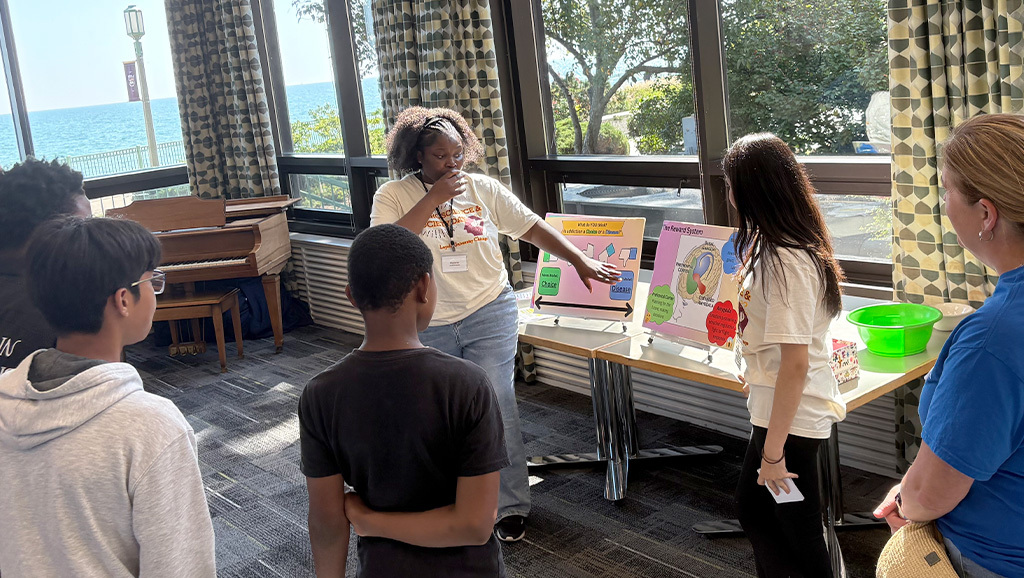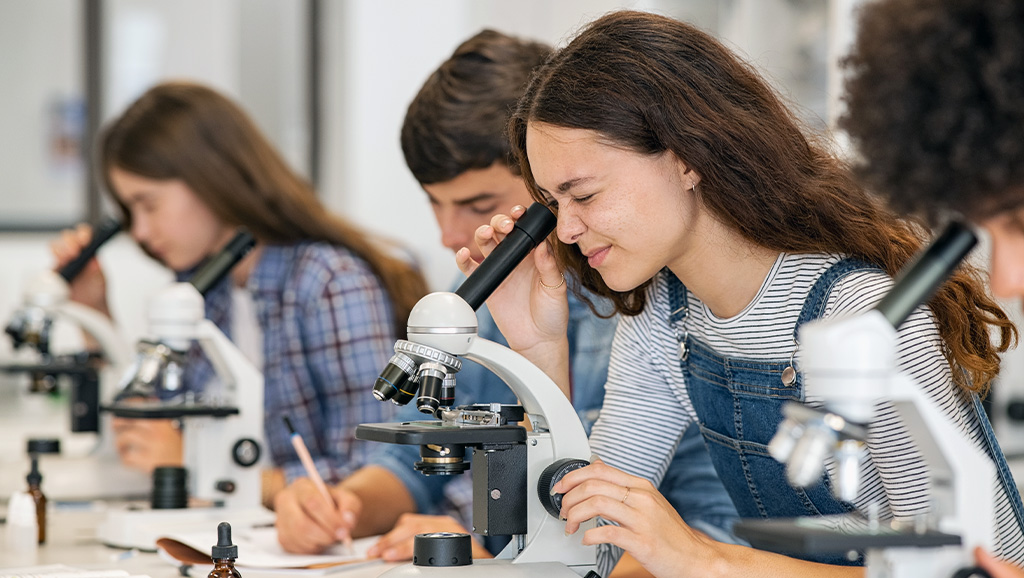Are you interested in integrating more neuroscience into your lessons? With a wealth of resources spanning all grade levels, it’s never been easier! To start, take a look at the Overview Matrix for grades K-12, developed by the Society for Neuroscience and BrainFacts.org, to learn how fundamental neuroscience concepts align with Next Generation Science Standards.
Explore below a few examples of interactive guides and resources designed for different grade levels that students and teachers alike can use to learn about the brain.
Neuroscience for Elementary School Students (Grades K-5)
First exposure for young learners is an exciting time, and what better way to engage their curiosity than by having them build their own models of the brain! The “Build-A-Brain” exercise integrates a fun, sensorimotor activity with a basic neuroanatomy lesson using Play-Doh. Students will explore the structure and function of various parts of the brain, compare animal models, and refine oral communication skills by presenting work to peers.


After students have learned about the different regions of the brain, they can follow up with “Protect Your Brain,” an engaging lesson that teaches the importance of our two levels of protection for the brain: the skull and cerebral spinal fluid. Using a raw egg, students will learn about the ventricular system, discover the various protective factors for the brain, and understand the importance of providing extra protection for the brain.
Now, it’s time to extend the students’ curriculum with the “Expose Your Nose” exercise. This lesson on the human sense of smell stimulates discussion through an interactive experiment. Students will learn the pathway for odors once they enter the nose, discover how smells are tied to certain memories, and practice observing and gathering scientific observations.
Neuroscience for Middle School Students (Grades 6-8)
Middle school is the perfect time for students to explore the cellular mechanisms of neuroscience. The “Pipe Cleaner Neuron” is a hands-on activity, where students learn to create realistic model neurons out of colorful pipe cleaners. Through this exercise, they will understand the main components of a neuron, its functions, and discover how neurons communicate with one another during neurotransmission. This introduction to neurons lays a crucial foundation for understanding how communication between these specialized cells underlies our brains’ most essential functions, including memory.


“Now You See It, Now You Don’t” guides learners through the different stages of memory formation. Through this lesson, students will learn about the brain regions involved in creating memories, the different stages of memory storage, and have fun practicing their short-term memory skills with a class-wide trivia contest.
Follow-up with “Optical Illusions,” an interactive lesson where students experience and analyze how visual perception can trick your brain. By learning about the visual system, including different parts of the eyeball, students will understand how objects we see are perceived by the brain.
Neuroscience for High School Students (Grades 9-12)
High school is the prime time for students to get their hands dirty…literally! The “Sheep Brain Dissection” is a lesson in comparative and gross anatomy. Students will learn how to safely, and respectfully, examine the brain of a previously living organism to explore its structures and relationships to function by visually comparing the brains of different species.


For students interested in a more analytical, research-based approach to understanding the teenage brain, “This Is Your Brain on Depression” teaches students about the causes, symptoms, and treatment options for teen depression. Students work in groups to investigate what happens in the brain during depression, the advantages and disadvantages of current treatment options, and how antidepressants target neural mechanisms to alleviate its symptoms.
A multi-unit Neuroscience & Society curriculum offering an in-depth focus on neuroscience—from cellular anatomy to future technologies and societal issues—was developed by The Franklin Institute and recently updated with support from the Dana Foundation. This highly engaging, flexible curriculum can be integrated into existing science lessons or utilized as a semester-long course for students. High school students will participate in hands-on activities to learn about topics including brain basics, learning and development, and current methods used in neuroscience to learn how the brain orchestrates behavior and is constantly changing. Class-wide discussions and debates in current societal issues such as mental health, substance use, and criminology will foster students’ curiosity in how the human experience is transformed through the many ways neuroscience intersects with our daily lives.
Additional resources, lesson plans, and fact sheets can be found on the Dana Foundation’s Resources page alongside many other educational assets from organizations whose work we have supported, including BrainFacts.org, the Brain Bee, and the University of Washington.
Recommended Reading

From Broadcast to Belonging: Dana's Public Engagement Evolution

Reciprocity in Neuroscience: Dana Foundation Panel at the UN Science Summit


